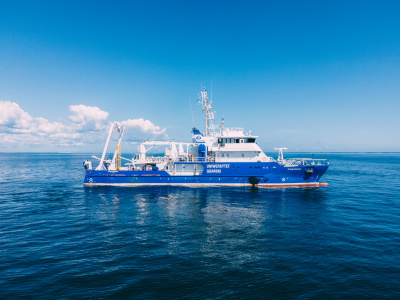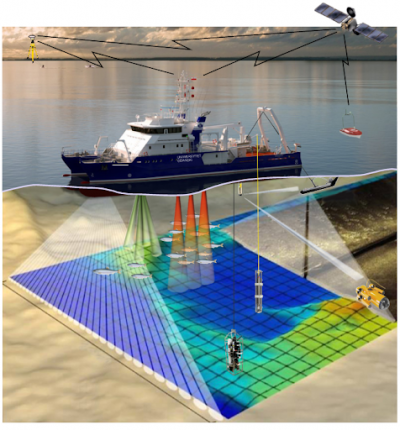Six research rooms, low manning requirements and advanced equipment – these are the aspects of the 'Oceanograf', a vessel of the University of Gdańsk that make it the most advanced vessel of its type on our continent.
In late 2017, the R/V Oceanograf sailed on a research cruise for the first time and has been actively involved in Baltic Sea research ever since. Its services are used by both companies and universities, so the ship rarely stays in port.
The University of Gdansk catamaran has six rooms intended for researchers: wet lab laboratory, measurement laboratory, aseptic laboratory, thermostatistic laboratory, aerosol observatory and compass deck. Thanks to modern solutions, only seven people are needed to operate the vessel, so during the cruise up to twenty-three scientists may work at the above-mentioned stations.

photo Maciej Wróblewski
Modern equipment is also available to the research team. On a daily basis, they use bottom, pelagic and beam trawling equipment, as well as a meteorological station. To study what is under the ship there are various probes and sonars, with a multibeam echo sounder at the forefront. Thanks to this last device, our ship can map the shape of the seabed. Data from the scientific equipment can also be used to describe other factors, such as the type of sediment present on the bottom. Investigating the structure of the seabed or taking samples can be done by a sound probe and an advanced ROV.
The draught of the 'Oceanograf' is just two metres, allowing all of the above equipment to be used to survey the bottom in areas unreachable by conventional vessels.

Moving with the times, the 'Oceanograf' has been given a hybrid drive. The entire ship is powered by electricity generated by four generators producing almost 1300KW. A power of this magnitude makes it possible to propel the ship and conduct research at the same time. The range of this vessel at an operating speed of 10 knots is over 4400 km. The autonomy of the vessel has been determined at 21 days.
Fully equipped with modern technology, our ship is ready to set sail along the west coast of Europe as early as 26 May.
